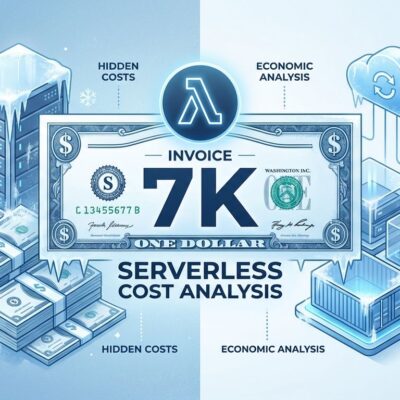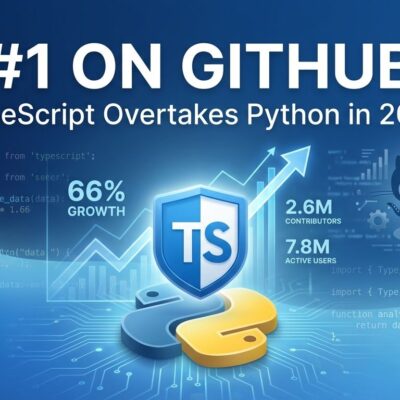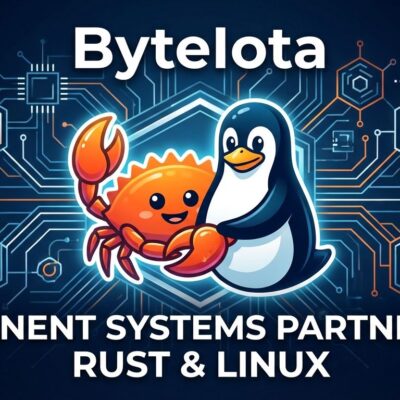
Gleam programming language achieved 70% admiration in Stack Overflow’s 2025 Developer Survey, claiming the #2 spot after Rust on its first survey appearance. For a language that reached v1.0 just ten months ago in March 2024, this is remarkable validation.
Gleam combines static type safety with Erlang’s battle-tested BEAM runtime, offering a middle ground between Elixir’s dynamism and Rust’s complexity. If you’re building distributed systems or tired of runtime bugs, Gleam promises “learn in an afternoon” accessibility with compile-time guarantees.
What Makes Gleam Different
Gleam occupies a unique niche: functional, statically typed, compiling to both BEAM and JavaScript. Unlike Elixir’s dynamic typing or Rust’s steep learning curve, it delivers type safety without the months-long ramp-up.
The core philosophy is refreshingly simple: no null values, no exceptions, no metaprogramming. Result types replace error handling, pattern matching replaces conditionals, and immutability is default. The compiler, written in Rust for speed, catches bugs before runtime and suggests fixes—”Did you mean name?”—rather than cryptic error messages.
Here’s a taste of Gleam’s syntax:
pub type DiceError {
DiceValueOutOfRange
}
fn checked_dice_value(value: Int) -> Result(Int, DiceError) {
case value {
1 | 2 | 3 | 4 | 5 | 6 -> Ok(value)
_ -> Error(DiceValueOutOfRange)
}
}No exceptions thrown. No null checks. Just explicit Result types that force you to handle errors. The compiler won’t let you ignore the Error case.
Gleam’s concurrency model inherits BEAM’s superpowers: millions of concurrent processes, fault tolerance through supervision trees, and the same VM that powers WhatsApp’s 99.999% uptime. But you get compile-time type checking that Elixir lacks. Pattern matching and pipe operators make functional composition elegant:
["hello", "world"]
|> list.intersperse(" ")
|> string.concat
|> string.capitalise
|> io.debugThis reads left-to-right, transforming data through a pipeline. No nested function calls, no temporary variables.
Real-World Use Cases
Despite its youth, 8% of developers already have Gleam in production. Strand, a London marketing agency, built their financial management system in Gleam—multiple services handling currency exchange rates and project management syncing. Their takeaway? “Optimizing for maintainability.” Fewer bugs, easier refactoring.
Gleam’s performance holds its own on BEAM. The Mist web server benchmarks comparably to Go for HTTP workloads. In ring process tests—200,000 nodes passing 6 million messages—Gleam matches Erlang and Elixir. This isn’t about raw CPU speed; BEAM’s strength is concurrency and fault tolerance.
Where Gleam shines:
- Real-time services: Chat systems, notifications, live updates. BEAM handles unpredictable load spikes gracefully.
- Microservices: Backend APIs requiring 99.99%+ uptime. Supervision trees restart failed processes automatically.
- Distributed systems: Services dealing with network partitioning. BEAM’s actor model isolates failures.
- Concurrent workloads: Thousands of simultaneous operations. BEAM’s lightweight processes cost pennies.
Where it doesn’t: CPU-intensive computations like 3D rendering or video encoding. BEAM isn’t optimized for raw throughput. If you need maximum performance, Rust or C++ is still the answer. If you need a mature ecosystem with batteries-included frameworks, Elixir’s Phoenix is more proven.
Getting Started with Gleam
Installation is straightforward. First, install Erlang/OTP (the BEAM runtime):
- macOS:
brew install erlang - Linux: Use your package manager (apt, yum)
- Windows: Download the official Erlang installer
Then install Gleam itself:
- macOS:
brew install gleam - Others: Download from package manager or GitHub releases
Create a project with gleam new my_project and run it with gleam run. That’s it—no configuration files, no boilerplate.
The interactive language tour teaches the entire language in your browser. One developer reported learning “most of what I needed in 30 minutes.” Compare that to Rust, where developers often struggle for months before feeling productive.
Pattern matching is central to Gleam’s elegance:
case the_list {
[head, ..tail] -> list.concat([reverse_list(tail), [head]])
[] -> []
}This reverses a list recursively. The pattern [head, ..tail] splits the first element from the rest. If the list is empty, return an empty list. The compiler ensures all cases are covered.
Learning resources are excellent for such a young language. Learn X in Y Minutes provides a quick syntax reference. Exercism’s Gleam track offers 122 exercises with mentorship. Cheatsheets exist for migrating from Elixir, Erlang, Python, Rust, and more.
Gleam vs Rust vs Elixir
Gleam sits between Elixir and Rust. Choose based on priorities: ecosystem maturity, learning curve, or type safety.
Gleam vs Rust: Rust’s ownership system provides maximum safety but demands months of learning. Gleam trades some safety for developer velocity. Use Rust for systems programming, embedded devices, or performance-critical code. Use Gleam for web services and distributed systems where BEAM’s fault tolerance matters more than raw speed.
Gleam vs Elixir: Elixir offers a mature ecosystem—Phoenix for web apps, Ecto for databases, Oban for background jobs. Gleam’s ecosystem is tiny by comparison. But Gleam’s static typing enables fearless refactoring. One developer noted: “Working in Gleam was more productive than Elixir… the type system allows me to try more things.” If your business logic is growing complex, Gleam’s types help manage that complexity. If you need production-proven tools, stick with Elixir.
Gleam vs Go: Go dominates cloud-native infrastructure with Kubernetes and Docker. It offers goroutines for concurrency and compiles to single binaries. Gleam provides actor-based concurrency and supervision trees for fault tolerance. Use Go for infrastructure tooling and maximum performance. Use Gleam for soft real-time systems and self-healing services.
The good news? Gleam interoperates perfectly with Elixir and Erlang. You can add Gleam modules to existing BEAM projects incrementally.
Should You Learn Gleam?
Gleam is production-ready—v1.0+ follows semantic versioning, and companies like Strand run it in production. But the ecosystem is small and the job market niche.
Learn Gleam if you:
- Want type safety without Rust’s learning curve
- Build distributed systems or real-time services
- Are curious about functional programming (easier than Haskell)
- Work in the BEAM ecosystem already
- Value early adopter advantage (rare skillset)
Wait if you:
- Need job security (Go/Rust are safer career bets)
- Require mature ecosystem (Elixir’s Phoenix is more proven)
- Are new to programming (start with Python or JavaScript)
- Work on large enterprise teams with low risk tolerance
The trade-offs are honest: small ecosystem, rigid code formatter (no configuration), setup requires three toolchains (Gleam, Erlang, rebar3). But you get type safety, BEAM reliability, and a language designed to be simple and maintainable.
Gleam’s 70% admiration in the Stack Overflow 2025 survey isn’t hype—it’s validation from developers who value practical type safety. The language has been called “elegant to read and write” and “a joy to use” by its community. For greenfield projects, side work, or adding types to BEAM codebases, Gleam is an excellent choice.
The 5-year outlook? Expect the ecosystem to grow 5-10x and production adoption to rise from 8% to 30%+ within the BEAM community. It will remain niche in the broader industry, but that’s fine. Not every language needs to be mainstream to be valuable.
If you’re tired of runtime surprises or intimidated by Rust’s complexity, give Gleam an afternoon. That’s all it takes to decide if this is your next language.












